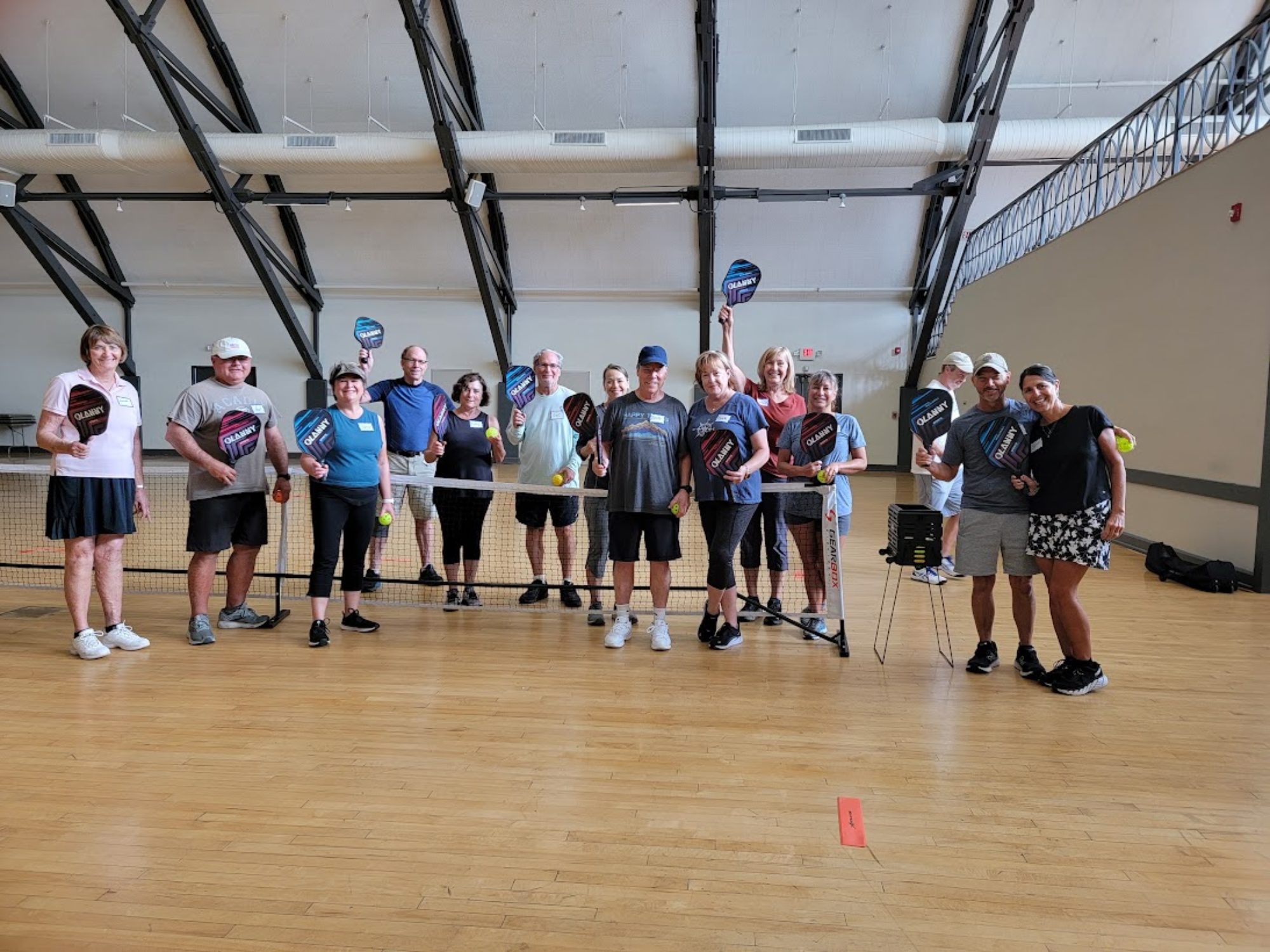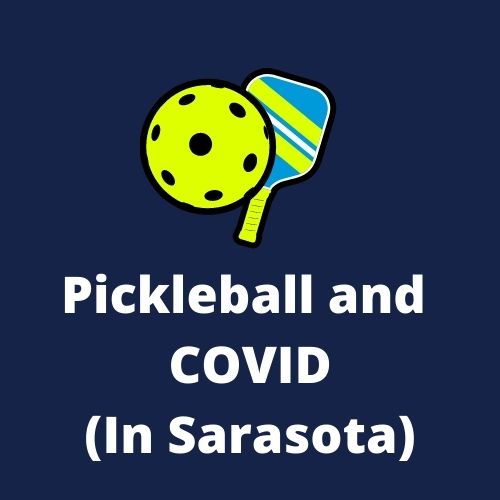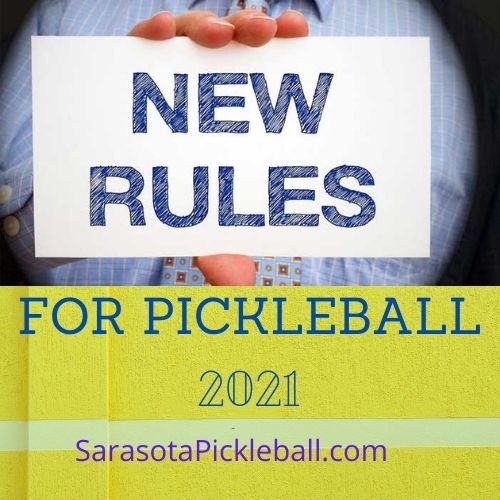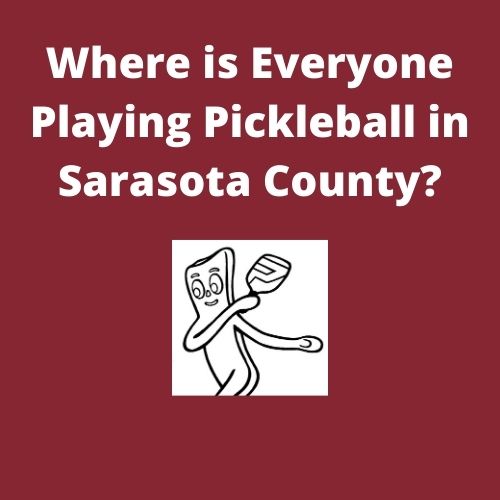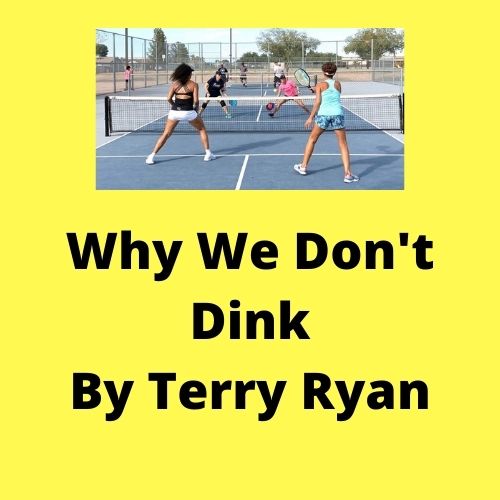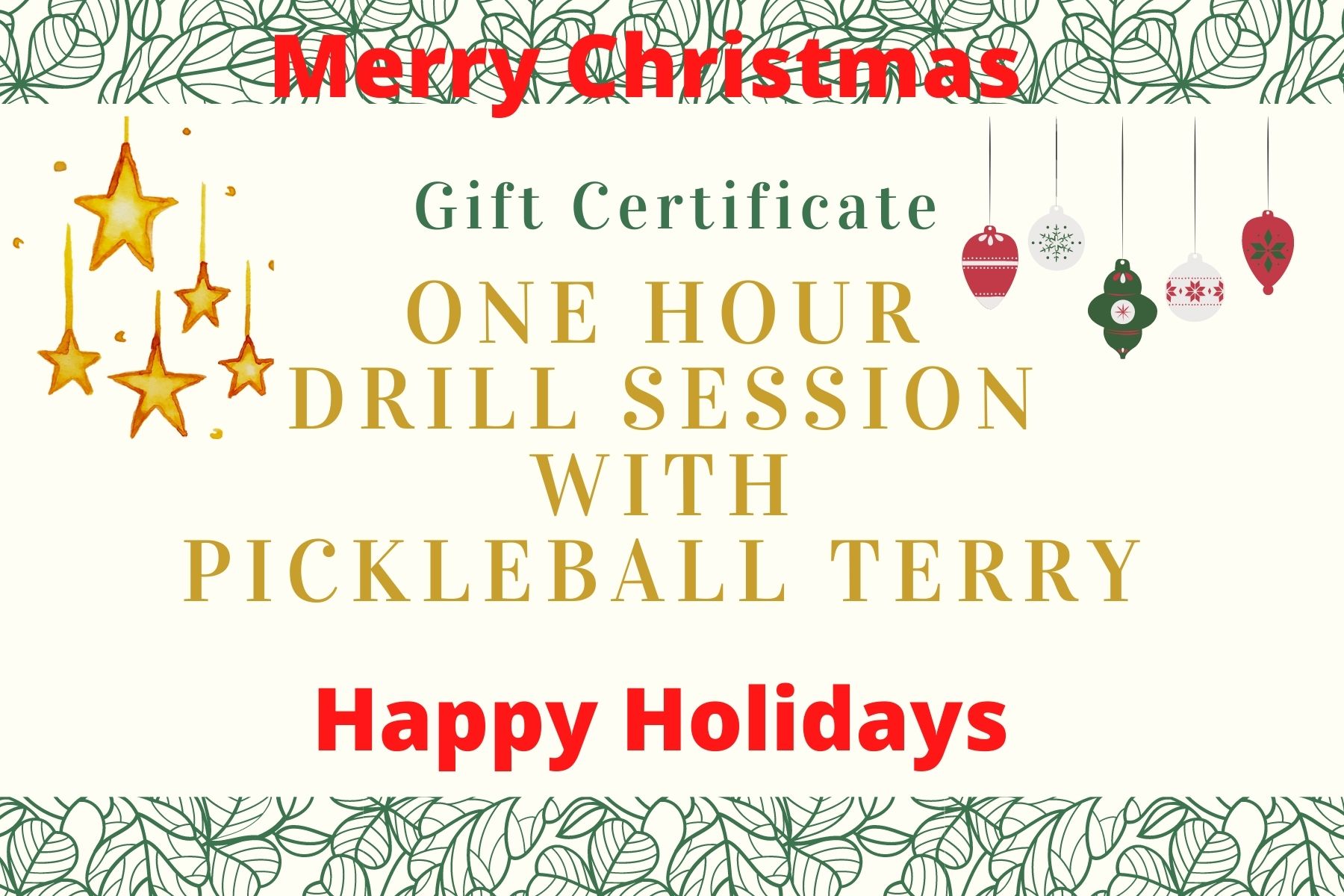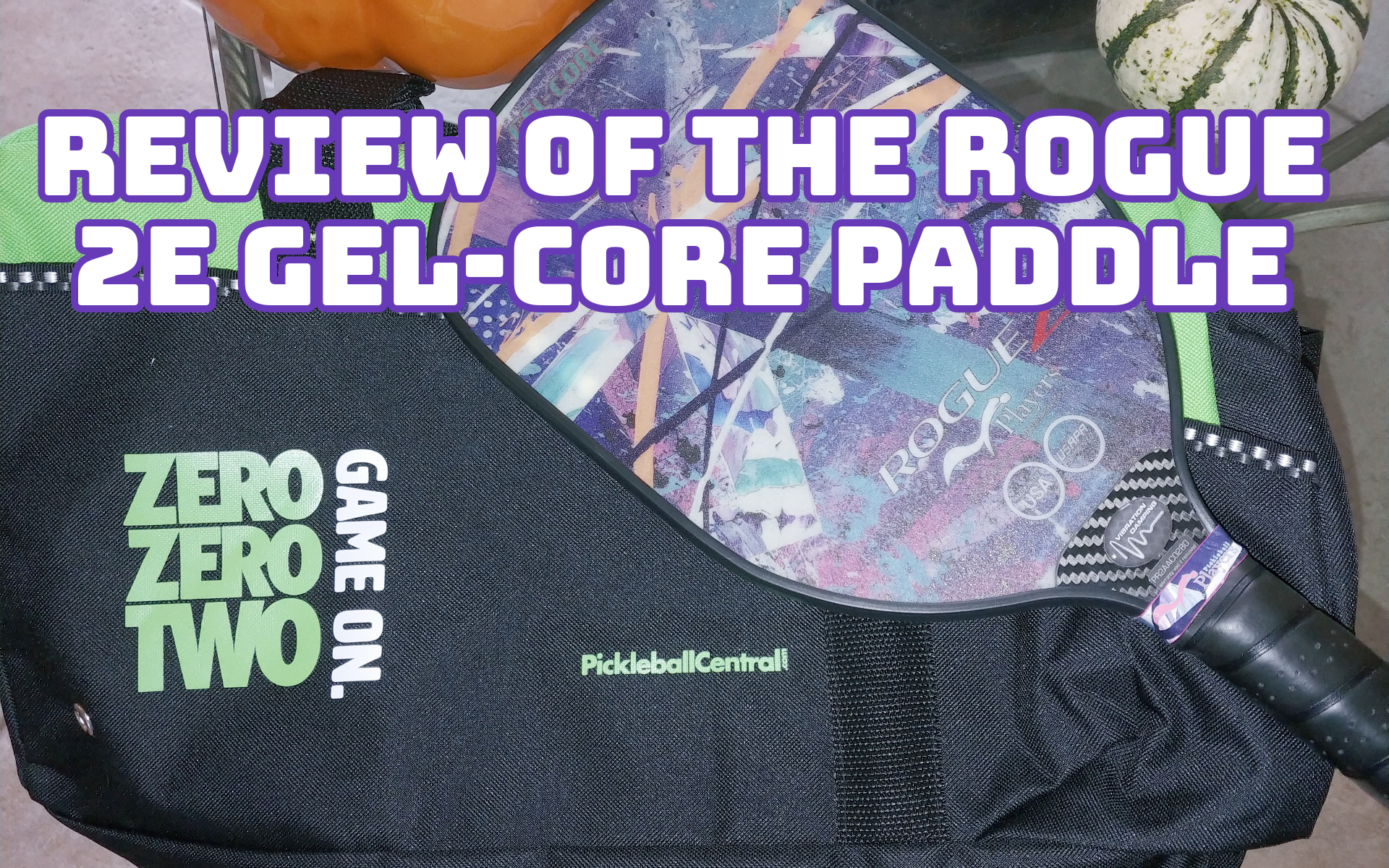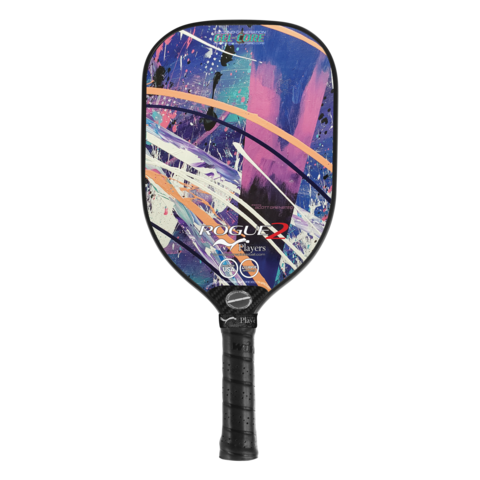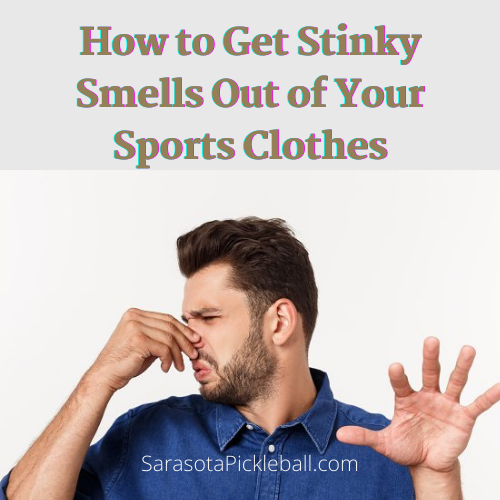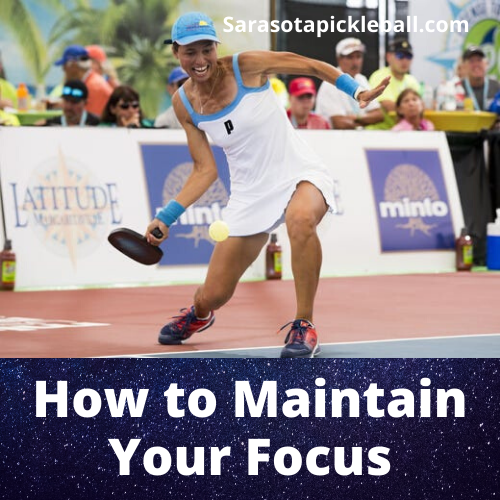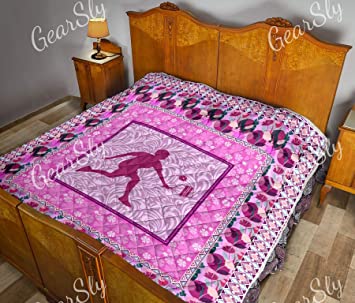What About COVID And Pickleball
Someone said, “If you watched Pickleball Terry you wouldn’t know there was COVID.” It’s true. If you saw my calendar, you would see that I play outside and inside with a lot of different people. So far, so good. (Knock on wood.) But I am certainly not encouraging you to take risks. If you feel the least bit uncomfortable with the situation, please listen to your conscience and don’t play, especially if you have underlining health conditions.
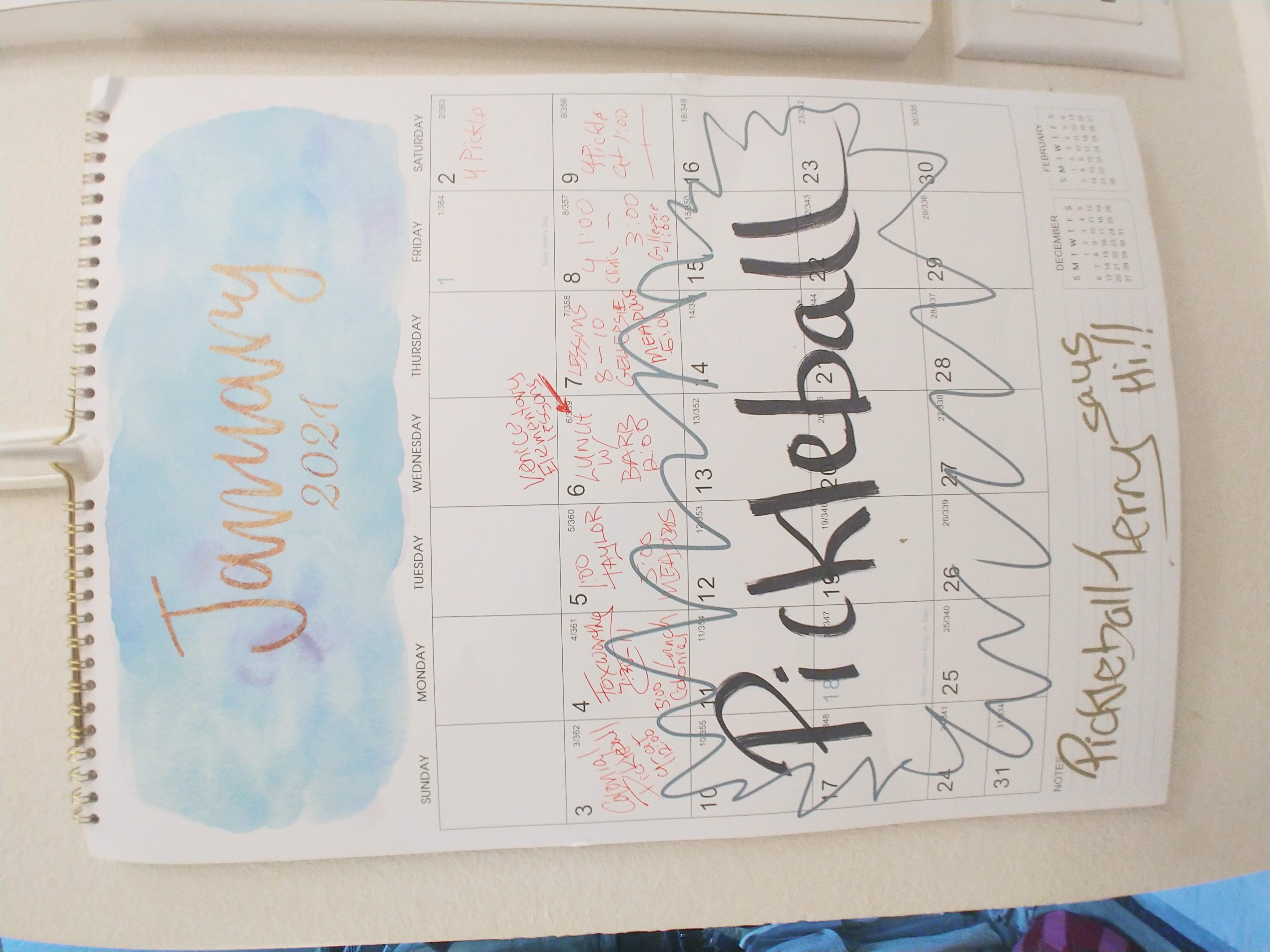
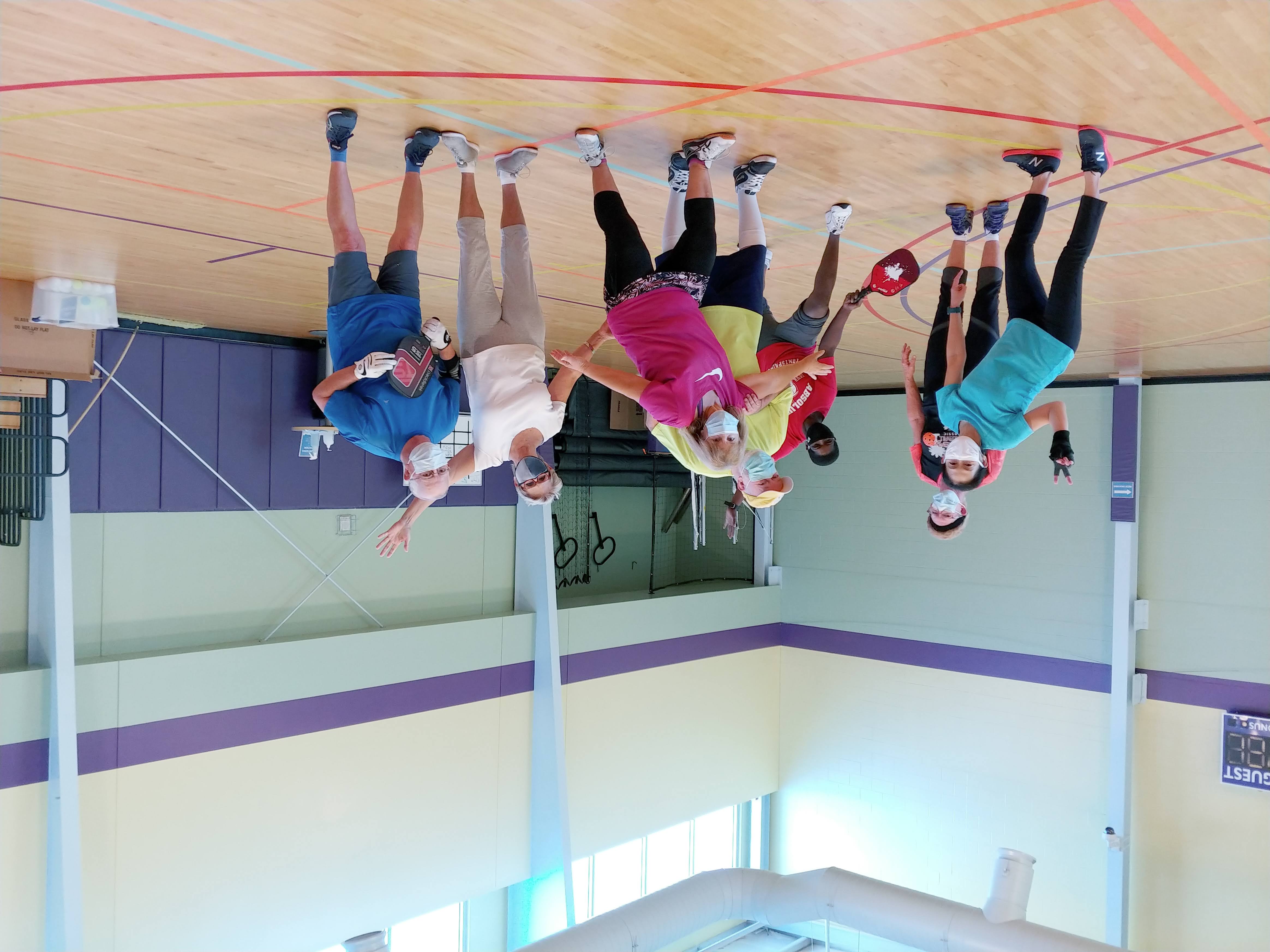
Some people are shocked when they see me in pictures with other players close together, and we are not wearing masks. I know. Believe me, I know. If I contract COVID I give you permission to say, “I told you so.”
The indoor pickleball facilities are doing their best to keep things safe. They are limiting the number of players, and disinfectant is easily accessible The staff does their part in sanitizing areas after/between pickleball times.
Remember: You must preregister to play inside at a county facility. No preregistering for the Ys, Church of the Palms, RL Taylor Community Center (except for the beginner’s class-limited to 8.)
Masks are mandatory to enter a building but not while you are playing. I want everyone to realize this before your travel to an indoor facility or outdoor court to play and find out that not everyone wears a mask while playing. Based on this understanding, you should make an informed decision. Are you comfortable playing inside or outside if everyone is not wearing a mask?
Some people feel more secure playing outside with a better air flow but again, not everyone wears a mask. They do try to social distance between games, and touching someone else’s paddle is considered taboo. Also standing closer than 6 feet is not good. I have to admit, that sometimes I forget and I come too close when I’m talking with someone. They gently remind me to “step back.”
( Currently, my favorite paddle. Gearbox GX6)
Remember, if you are not feeling well, please do not come to the courts. And being tested for COVID is as easy as standing in line at RL Taylor for 30 mins. No cost. Testing also available at the old dog track on 5400 Bradenton Rd, Sarasota. When in doubt, get tested. (I’ve done it and it’s painless.)
What to bring with you for playing pickleball:
Stay safe out there.
Pickleball Terry
USA Pickleball Ambassador
PPR Certified Coach
Owner of SarasotaPickleball.com
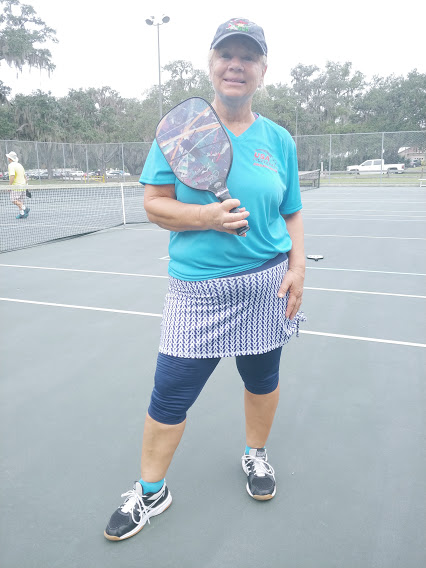
New Pickleball Rules For 2021 by Pickleball Terry
Yesterday I received an email with the new rule changes to the Official Pickleball Rule Book from the USA Pickleball Association. Surprisingly, the “let” rule has been eliminated. Meaning, that there are no more LETS on the serve. If during the serve, the ball hits the net but lands in the opponents correct side of the court, and not in the kitchen, it is a playable ball. No more TAKE OVERS. If someone calls a FAULT and stops the play, they lose the serve, or if the opponents yell LET during serve the, the serving side gains a point.
Or when the ball hits the net then lands in the kitchen, the server loses the serve. This should move the game along.
Another interesting change, you can not hit a ball then call BALL and a replay if a ball rolls on the court. You must stop play before returning a stroke. As in no more, I messed up but it was because a ball rolled on the court.
Rule 4 M 11 States that it is a FAULT if the ball is served before the entire score is being called. This is to end quick serving. (A tactic to catch opponents off guard. Can’t do that anymore.)
Here is a new one…a player may use their paddle to toss the ball up for the serve. You no longer are just limited to your other hand to toss the ball for the serve. Reason…to stop the spread of disease. (Not making this up.)
There are 81 pages of changes, most have to do with clarifications when a referee is present. But here it is in PDF for you to review.
NEW CHANGES TO THE USA PICKLEBALL RULES FOR 20212021 Change Document 12-13-20
Thanks for reading,
Pickleball Terry
USA Pickleball Ambassador
Certified Pickleball Coach PPR
Owner of SarasotaPickleball.com
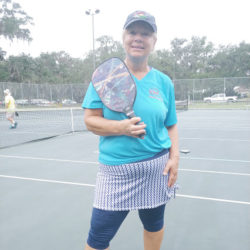
Where is Everyone Playing? By Pickleball Terry
Where is everyone playing? It used to be easy…before COVID. We all went to one of the county or city facilities and played inside. Not this fall. Sarasota pickleball players are scattered all over the county playing outside, and we are finding out we like playing outside.
Why aren’t we playing indoors? All the county facilities are open for play.
It requires registering. Seems that pickleball players do not like to register. We don’t know who is going to be playing, and this requires commitment. Ha! This is not going over well.
I personally tried to organize a few friends to signup to play indoors at Colonial Oaks Park, and I went online to register. But try as I might, I couldn’t. I went to the office the next day and asked why I wasn’t successful. Patricia, who is the park manager there, said I had to register 48 hours prior. She said she only had one person who signed up so she cancelled the time slot. Unfortunately, It also is not possible to see who else is signed up to play. On pickleball signup apps like the Pickleball Den, you can see the names and sometimes level of who is playing.
A couple years ago, I did try to organize a signup program on Signup Genius, but unfortunately it didn’t catch on and it fizzled out. It was especially great for the RL Taylor Friday night play because players could see if enough people were playing before they drove to the facility. But, nope, it was not successful and I abandoned promoting it.
Then there were the private groups. I and other people rented county facilities for a couple of hours on certain days then invited our friends of equal playing ability to play. These were great because X number of people would play and there was no long waiting between games. We all remember the LONG WAIT TIME at Arlington, RL Taylor and Salvation Army. Ugh! 45 minutes of waiting to play a 10 minute game.
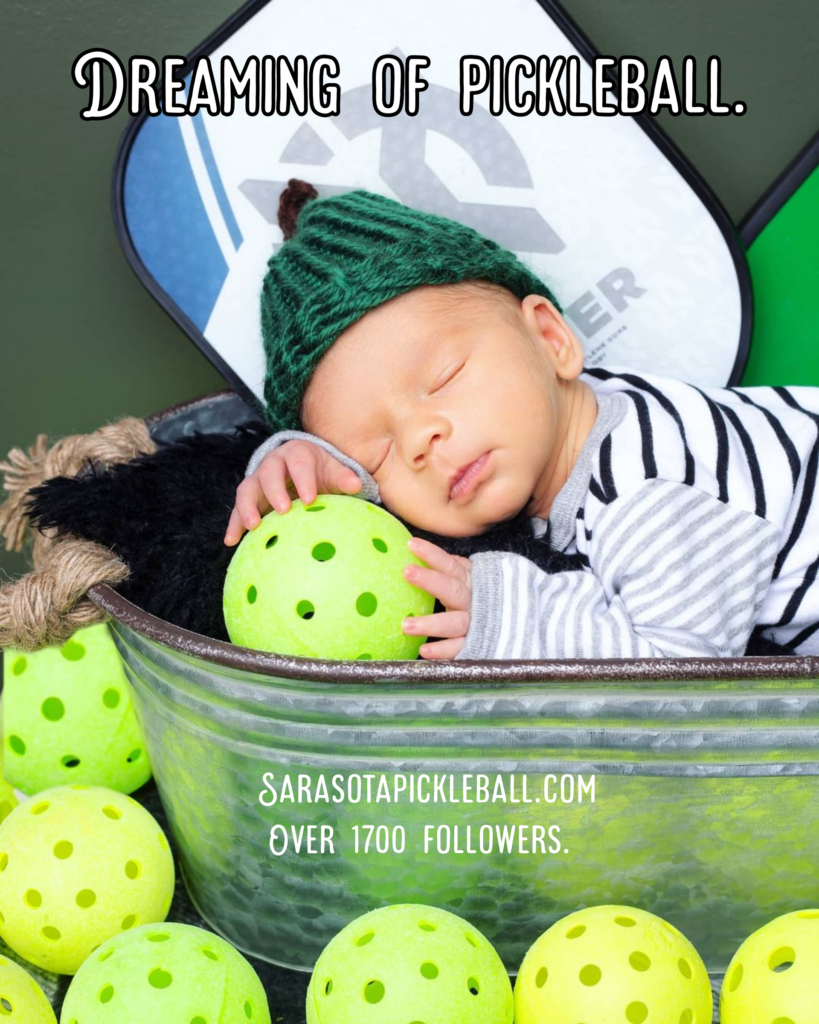
I also sought out info on renting an indoor facility this year but the paperwork that was sent to me was scary! I would have had to submit an action plan on How Would I Keep the Players Safe From COVID? That did it for me. Nope!
While indoor play at the county facilities is down or nonexistent right now (Colonial Park-2 courts, Longwood Park-3 courts, Newtown-4 Courts) I hear that people are playing inside at Englewood and Venice Community Center.
City Indoor Facilities
RL Taylor does not require preregistering. They have 2 courts open at 9-3 Monday – Friday. You can only sign up for blocks of time. Masks are worn to come into any inside facility but not while you are playing. Taylor is a COVID testing center and if there is a line of cars to get into the parking lot, just go around and tell the attendant that you are there to play pickleball.
Arlington Park is not open at this time.
Salvation Army on Tuttle has not opened at this time.
Church of the Palms does not require preregistering. They have 3 courts in their beautiful gym and limit it to 24 people. Eye protective glasses are required.
INDOOR PICKLEBALL
12/14-12/20
CHRISTMAS EVE, CHRISTMAS, AND NEW YEAR’S DAY CLOSED
City Facilities Indoors
RL Taylor Community Center
1845 34th St, Sarasota, FL 34234
You can register now at the front desk. If there is a line of cars for COVID testing, just go around them and tell the guard you are there to play pickleball. He’ll let you right in.

Tuesday and Thursday: Intermediate/Advanced
Fridays: Open play
Hours: 9:00am to 3:00pm broken into 2-hour blocks of time.
In order to maintain the cleanliness with an abundance of caution the courts will have to be cleared 15 minutes prior to the end of the time block in order to give the staff adequate cleaning time. The playable time will be 9am-10:45am, 11am-12:45pm and 1pm-3pm.
More people are showing up. Mornings are busy, Afternoons are empty.
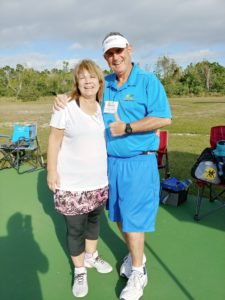
Arlington Park Still Closed
Below is a list of indoor county facilities

1300 S River Rd, Englewood, FL 34223
You must pre-register before going CLICK HERE to any county facility!!!!
326 Nokomis Ave S, Venice, FL 34285
Newtown Park
2800 Newtown Blvd.
Sarasota, FL 34234
Colonial Oaks Park
5300 Colonial Oaks Blvd.
Sarasota, FL 34233
Longwood Park
6050 Longwood Run Blvd, Sarasota, FL
Laurel Park
509 Collins Rd., Nokomis, FL 34275
Woodmere Park
3951 Woodmere Park Blvd, Venice, FL 34293
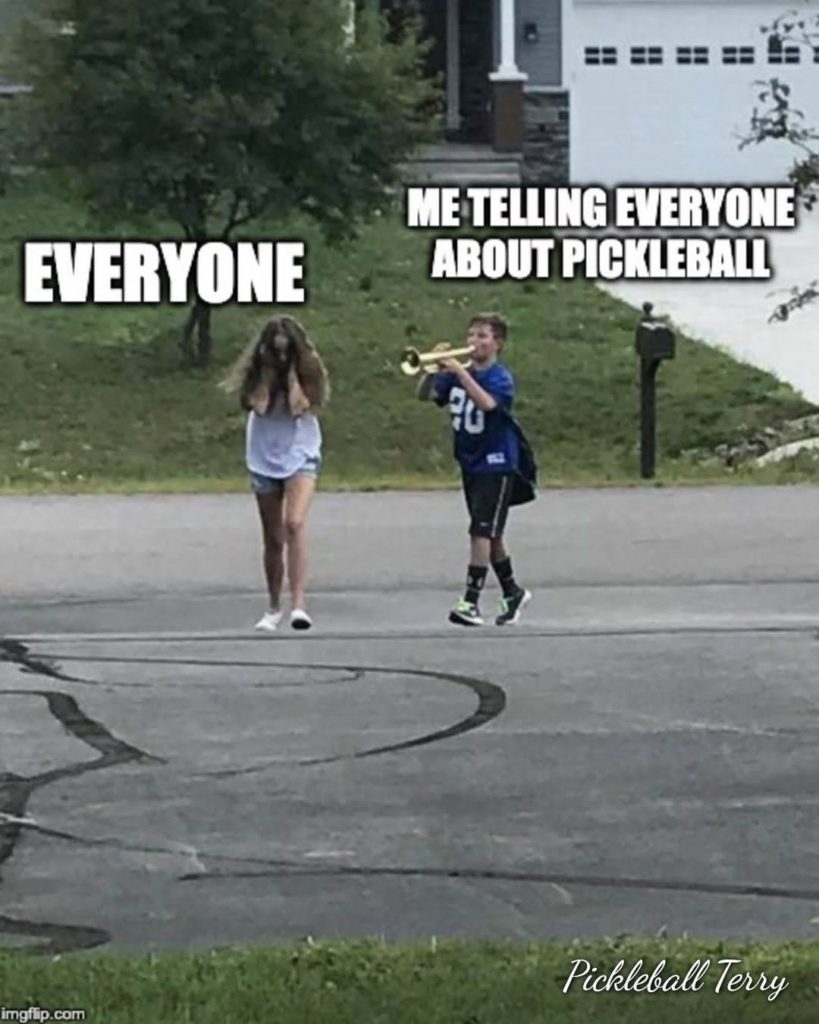
OUR Y ESL (Formally the YMCA)
Potter Park Dr., Sarasota, FL 34238Members free and Drop-in $7.00
Did you know…if you are new to the Y they will give you a free pass?Monday, Wednesday, Friday
8:30 a.m.-10:45 a.m.
Intermediate/advanced (2 courts)
Intermediate/Beginners (1 court)
Tuesday, Wednesday and Friday
Beginner lessons with Bob
7:45 a.m. – 8:30 a.m.
Beginners/Intermediate (2 courts) 8:30 a.m. – 10:00 a.m.
Intermediate/advanced (1 court) 8:30 a.m. – 10:00 a.m.
Thursday
Beginners/Intermediate (2 courts) 8:30 a.m. – 10:00 a.m.
Intermediate/advanced (1 court) 8:30 a.m. – 10:00 a.m.
Saturday
Saturday-8:30 a.m. – 10:30 a.m. Intermediate/Advanced only
Sunday-10:00 a.m. – 1:00 p.m. OPEN PLAY
Our Y Berlin
1075 S. Euclid Street
Sarasota
(2 COURTS IN THE STUDIO)
Mondays 1:00 p.m. – 3:30 p.m.
Beginners/Intermediates
NIGHT!!!!! Tuesdays 6:30 p.m. – 9:00 p.m.
Intermediate/Advanced
Wednesdays 1:00 p.m. – 3:30 p.m.
Beginners/Intermediates
NIGHT!!! Thursdays 6:30 p.m. – 9::00 p.m.
Intermediates/Advanced
Beginner/Novice clinic with Pickleball Terry
Drills/Techniques/Strategies/ Games
Fridays 1:00 p.m. 3:00 p.m.
(Members free and $7.00 for non-members)
Friday Beginners – 3:00 p.m. – 5:00 p.m.
Saturdays 1:00 p.m. – 5:00 p.m.
Intermediates/Advanced
Sundays 12:00 p.m. – 4:00 p.m.
Open play
The Church of the Palms
3224 Bee Ridge Rd, Sarasota, FL 34239
(Note: Protective lenses are required.)
Tuesday and Thursday
NEW MORNING TIME
9:00 am – 12:00 pm
Intermediate and Advanced
Tuesday and Thursday
NEW AFTERNOON TIME
2:00 pm – 5:00 pm
All play
Thursday, December 24 – no Pickleball
Friday, December 25 – no Pickleball
Thursday, December 31 – morning play only from 9:00 – 12:00.
Friday, January 1 – no Pickleball
*We will try to maintain a maximum of 24 players in the facility
The Center at Anna Maria Island
Is open again.
Click here for more info.
GT Bray (Indoors) For more information contact Jay Jaudon at 941 742-5923 x6 – Send Email
All levels and no reservation required for outdoor pickleball at GT Bray.
Click Here and Here
G.T. Bray Pickleball Outdoor Courts are OPEN
Outdoor drop-in with skill-level choices is now Tuesday, Thursday and Saturday:8:30-noon.
(941) 742-5923
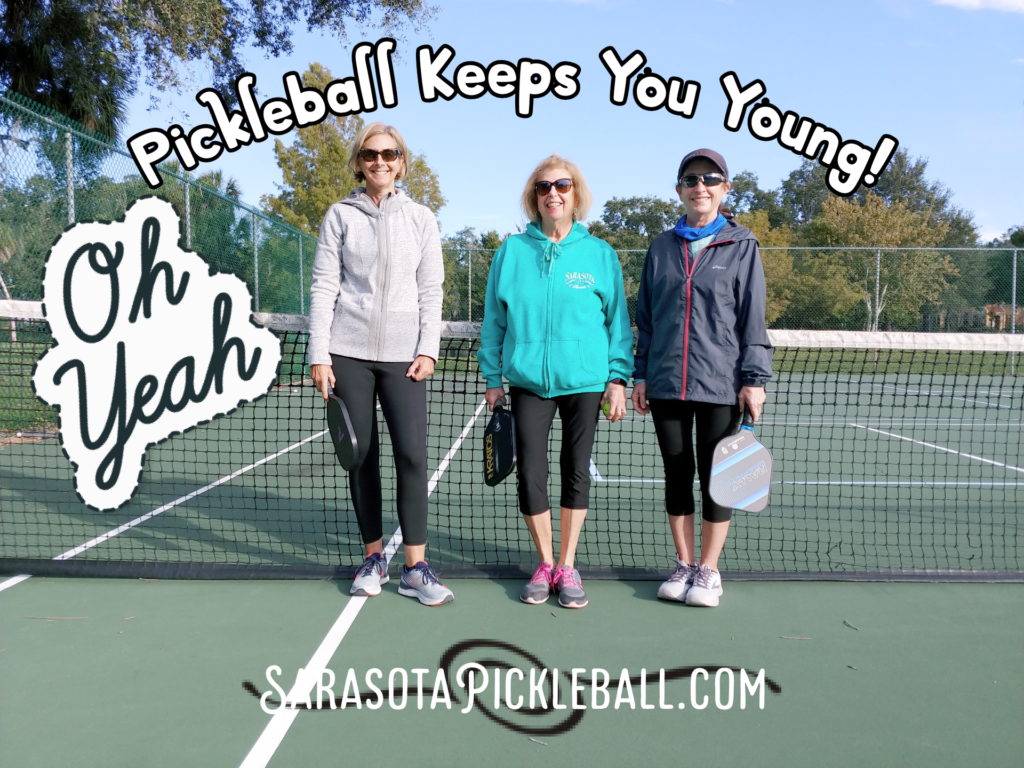
OUTDOOR PLAY
Outdoor play, as you expect, is popular in Sarasota with COVID and we live in Florida with beautiful weather. Who wouldn’t prefer to play outside! Love it!
Colonial Oaks Park is the HOT place to play in central Sarasota. Dick Friede is the volunteer that sets the nets up everyday, 7 days a week, 7:30 a.m. – 11ish. There are 2 tennis courts with one court lined for 2 pickleball courts. Nets are not supplied by the county. You have to bring your own if you want to play in the afternoon or at night. There are lights for nighttime play, bathroom facilities close and plenty of parking.
Because this location is popular and many players showing up, we have chalked out the other tennis court for 2 more pickleball courts. This is where the problem is. When and if tennis players show up, the pickleball players have to vacate the tennis court. This has caused friction between the tennis players and the pickleball players. Oh boy. We need dedicated pickleball courts in central Sarasota so we don’t have to share with the tennis players.
Fruitville Park has 2 tennis courts and all are lined for 4 pickleball courts. There are lights and a bathroom close by. We also do not need to give up the courts if tennis players show up. It is first come, first serve. NO ORGANIZED PLAY. You must wrangle up your own players and your own nets.

Siesta Key Public Tennis Courts have 4 tennis courts and 2 are lined for 4 pickleball courts. No organized play and bring your own nets. The bathrooms are a hike away but plenty of parking and lights. The tennis players can get pretty testy with pickleball players so be cautious with running behind their courts or letting balls wander onto their courts. First come, first serve so try to get there early to beat the tennis players.
Gillepsie Park in downtown Sarasota has 3 tennis courts and one of the courts has lines for 2 pickleball courts and nets that are left by the fence that you can move to the pickleball courts. It is hit of miss. Sometimes I go there to play and I have to wait. Other times, no one is there. Can’t figure the pattern out. No lights and the last time I tried to use the restrooms, they were locked.
Newtown Park has 2 tennis courts and both are lined for 4 pickleball courts. Bring your own nets. Bathrooms in the main building or across the street at the library. NO organized play. If you see a group playing there and any place I have written that does NOT have organized, drop-in play, it is a private group of friends. Will they let you play if you happen upon them? Maybe, but they are not required to.
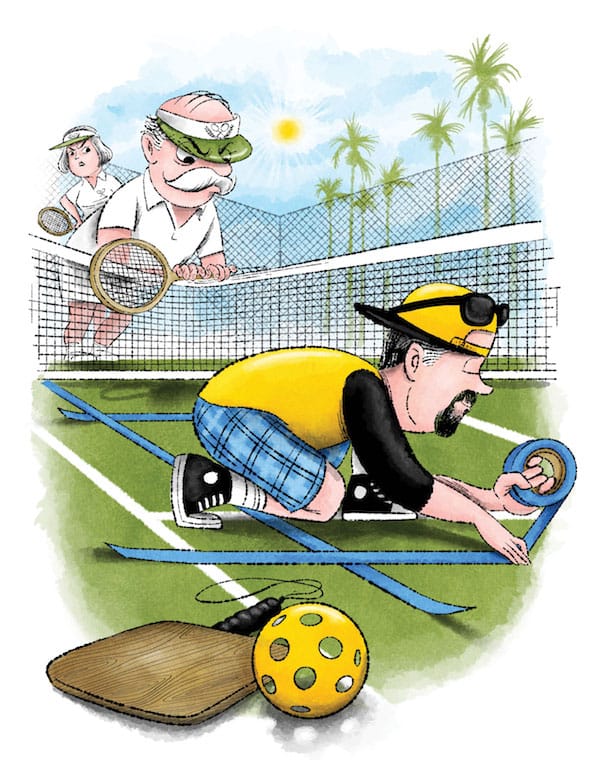
Lakewood Ranch has dedicated pickleball courts by the high school for drop-in play. I have heard mixed reports and some people have told me they don’t like new people, and people have said it is a very inviting group. Here is info from Bob Haskins who “runs” things at the courts. LWR Pickleball Club Newsletter LWR DECEMBER
No lights and not sure what the bathroom situation is.
…If you see a group playing there and any place I have written that does NOT have organized, drop-in play, it is a private group of friends. Will they let you play if you happen upon them? Maybe, but they are not required to…
Twin Lakes Park does not have organized play and does not supply the nets. They have 2 tennis courts and both are lined for 4 courts. No lights, sorry. The bathrooms are a hike but plenty of parking. Tennis dominates at this location and hard to plan a group to play there because you never know if all the courts (and they usual are) have tennis players. Sorry.
Laurel Park in Venice has 2 tennis courts that are lined for 4 pickleball courts. There is NO organized play there but yes for lights. Lots of parking and bathroom close by.
Foxworthy Park in Venice. Finally, dedicated courts for pickleball! Yea! 6 of them with drop-in play in the mornings. (All organized, drop-in play is in the morning.) Bathrooms are a HIKE! Might as well drive to them. No lights! They used to have a porta-potty but kids kept on tipping it over so it was removed. Also, there are 2 tennis courts nearby with one court lined for 2 pickleball brings. Bring your own net and friends to play on the tennis courts here.
Englewood Sports Complex has indoor and outdoor dedicated courts. Outdoor: (12) Permanent Outdoor Pickleball Courts. Lights available until 10pm Sept-May. No Reservations or fees for outdoor courts, 1st Come, 1st Serve. M-W-F mornings are intermediate to advanced play. Tu-Th-Sat are beginner to intermediate play. Bathrooms nearby and plenty of parking.
The schedule is constantly changing so to keep everyone up-to-date I send out a weekly newsletter. Please signup for my newsletter.
Thanks,
Pickleball Terry
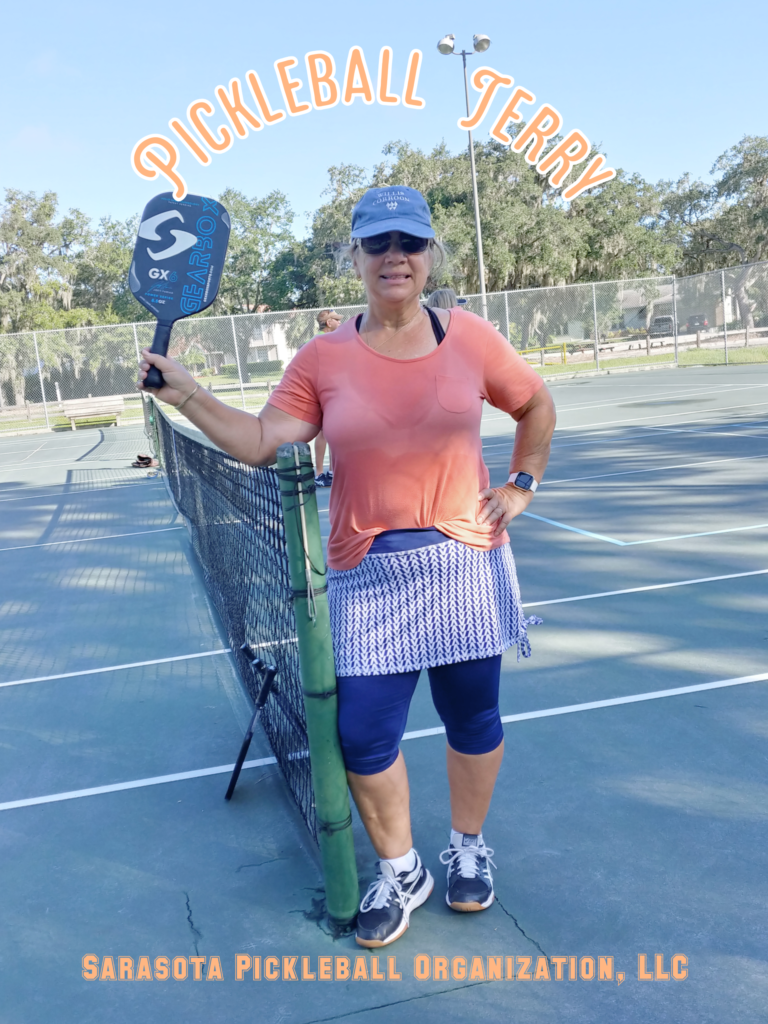
Why Most of Us Don’t Dink by Terry Ryan
There we are, warming up at the net making sure our toes are not on the kitchen line and dinking politely and carefully to each other, when It doesn’t take long before someone gets a little itchy to start the game and hits a hard shot; usually the signal to start. Then the game begins and no one dinks again. What? We all have been told that the game of pickleball is won at the kitchen line, and it is true. The entire premise of a good defense is who gets up to the kitchen line first, and those that do control the game. Dinking comes into play when all opponents are at the kitchen line and each side is hitting balls into the opponents kitchen waiting for a screwup by the other team.
 So what’s up with that? Most of us have taken a couple of clinics or private lessons, or watched Youtube videos. They all show us that dinking is important. But what stops us from dinking during a game? Fear!
So what’s up with that? Most of us have taken a couple of clinics or private lessons, or watched Youtube videos. They all show us that dinking is important. But what stops us from dinking during a game? Fear!
That’s right, fear. Fear that we are going to screwup and hit the ball into the net or, just as bad, pop the ball up so the opponents slam it pass us. Yes, that’s about right. Why? Because we do not drill enough.
Drilling eliminates fear. And when I say drill I mean drill 90% and play 10%. If that doesn’t appeal to you then drill 75% and play 25%. Dink until it becomes automatic. Something you don’t have to overthink when you are playing; it comes naturally. They call it MUSCLE MEMORY.
What to do? Drill. Find a person willing to be your drill partner. A player that wants to UP their game as much as you do. Interestingly enough, it is hard to do. Most intermediate players are unwilling to drill. They find it boring. I have put together drill groups, and I can just tell that they can’t wait to start a game instead of drilling, Yes, drilling can be boring unless you realize the importance of practice, practice, practice! If you can wrap your head around that, and focus instead of how important it is and an integral part of the process of improving your game, it will no longer become boring.
Is drilling for everyone? No. It’s not for the social players who just want to get a little exercise and see their pickleball friends. Their game is just fine the way it is. But for the player who wants to be competitive and play in tournaments, drilling is essential.
At my Friday’s clinics, we do a lot of drills for 2 hours. I have watched beginner pickleball players become aggressive intermediate players. Their games improve immensely because of all the drilling. I also try to make it fun and introduce new drills each week to challenge them.
Funny story, I remember at a clinic I was in that we were all working on a drill over and over again. The instructor wanted us to get it down. It was towards the end of the day, and sure the instructor and the students were getting tired, when one of the students spoke up and said, “This is boring! Let’s do something else.” (Whoaaaaa) The instructor snapped his head around and told her that this was his class and she wasn’t going to tell him what to do! Awkward for the rest of us. But I remembered that scenario months later when someone in my class arrived late and told me that she was bored with the drill we were working on and to do something else. My mind flashed back to that rather ugly scene at the clinic and I said, “Okay.” Let’s do…(so and so). We quickly went into another drill (I have many that I have made up over the years, like, Walk of Shame and Dirty Dinking, and we proceeded to have a great rest of the class. Dodged that bullet.
Months later, that same person came up to me and told me her love of pickleball was instilled in her because of me. Wow! Powerful words and it makes what I do so worthwhile. I notice this person doesn’t like to drill and will she ever be more than a social player? Probably not. But as long as she is having fun and getting exercise in a positive environment, that’s all that is important. But, and I mean BIG BUT… if you want to become a 3.5 and up, so that opponents go gulp when they see you on the other side of the court, well, you better start drilling.
Christmas suggestion…purchase a $25.00 gift certificate for your favorite pickleball player here for 1 hour of personal drilling with Pickleball Terry.
My Review of the Rogue 2 Gel-Core
By pickleball Terry
I couldn’t resist trying out the Rogue 2E Gel-Core paddle. Everyone has heard of the honeycomb core, usually nomex material. Did you know that nomex is a popular material used for building aircraft interiors?
Nomex can be rigid and unpredictable, and also giving the paddle that loud POP sound when hitting the ball.
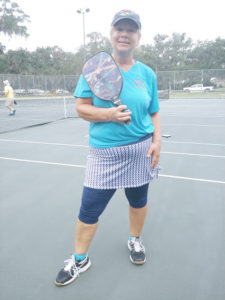
In recent years, polypropylene have become popular for pickleball paddle cores, and much more forgiving as far as the ball direction. This led to Players Pickleball Company to come up with a polypropylene/gel combination. Their solution is an entirely new hybrid material made possible by a proprietary manufacturing techniques. Without giving away too many secrets, they use an polypropylene honeycomb material that has been infused with an elastomeric material within the paddle face. They are able to fine-tune the infusion process to provide several benefits.
For those who prefer an elongated paddle shape, they bring you the Rogue2E! At 17″, it’s the maximum length allowed by the USAPA.
The Rogue2/Rogue2E paddles are game-changing in more ways than one. Featuring the new and improved 2nd Generation Gel-Core technology, vibration-damping carbon fiber throat reinforcement, and massively increased durability, all with a price well below the competition, the Rogue2/Rogue2E are a hit for players at all levels. I paid $129.00 and free shipping through the link below.
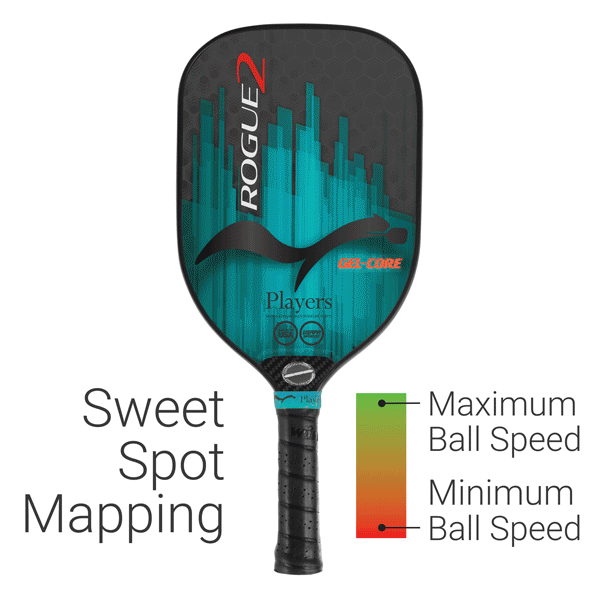
The video below covers all of the features of the Rogue2. The Rogue2E is the same paddle, just in a different shape.
Overall, I thought the paddle was excellent with control of shots. It has a lot of oomph and I was hitting the balls harder than I am used to. Something to get used to so you don’t hit a ball out. It has a long handle perfect for two-handed backhand players, but I found the grip (4 1/8 circumference) a little slippery so I will add an overlay grip.
The paddle has a graphite face for slicing and I was able to hit a couple of NO RETURNERS just dropping the ball over the net.
There are several colors and I purchased the ROGUE2 ARTWORK CONTEST WINNER FEATURING SCOTT GRENSTED

The Second Generation Gel-Core improves the paddle in several measurable ways:
- Larger Sweet Spot
- Greater Paddle Stability on Ball Impact
- Reduced Vibrations Transmitted to the Player’s Hand
- Softer Ball Impact Sound
- Improved Durability over First Generation
They took the blueprint for the 1st generation Gel-Core, which was already a proven performer and refined it further, giving it much increased durability along with improved vibration absorbing characteristics.
Players Pickleball is based in Bellingham, Washington, just a short distance from the birthplace of the sport. All of their paddles are USAPA-Approved and proudly made in the USA.
I loved this paddle after using it once. If you want to demo the paddle, send me an email or spot me on the courts.
Pickleball Terry
A Dream And a Plan: The Beach Boyz in Fort Myers
I have been following Dan Schuyler on Instagram for a few months and noticed he was posting interesting pictures of a build-out he and friends are doing in Fort Myers for an indoor pickleball court. So, I called him because I wanted to purchase one of his T-shirts. I like the colorful design.

Dan’s history, is he was an avid tennis player and would partner-up with pros like Nick Bollettieri, one of the owners of IMG. One day he was playing tennis on Palm Island and he was asked by the people in a court nearby, to be a fourth for pickleball. He said he always had his nose up in the air when it came to pickleball, believing it was beneath him, but they pleaded. Then he played and was hooked!
When COVID-19 came and with pickleball venues closing down, Dan came up with an idea to purchase a facility and build his own indoor pickleball court. He found a place with 4k sq. ft., purchased it for 1.2 million in Fort Myers and began to find corporate sponsors: Kyle Yates, Nu Life, YOLO, etc.
He plans to have pro clinics, personal lessons, a lounge, a sky box for viewers, peloton bikes, and a large screen to view and analyze players. His moto is, train, play, practice.
Dan wants to make this a go-to destination with a fitness center, dart boards, ping pong, and social functions such as barbecues. (Only one pickleball court.)
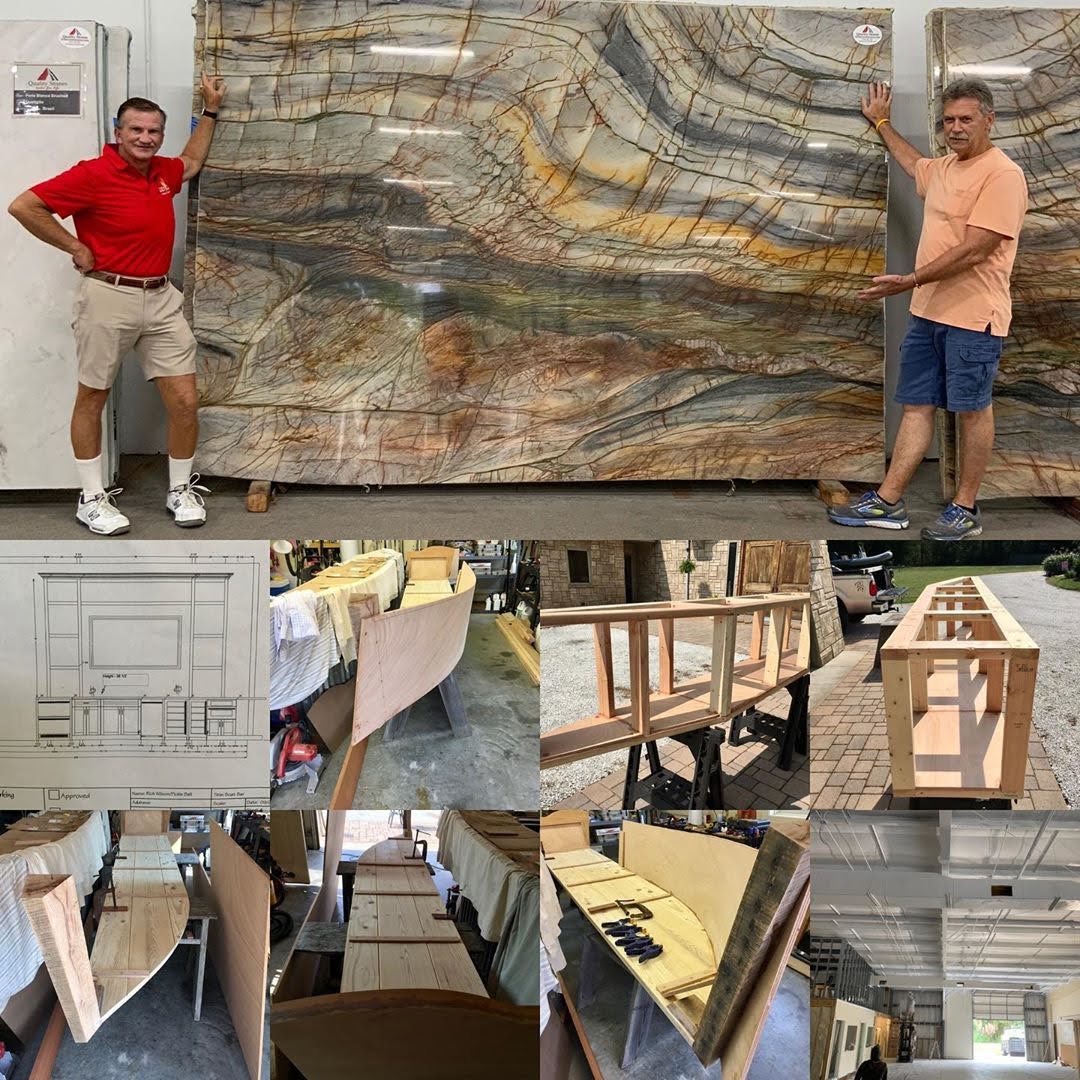
It sounds like a fantastic place for Dan and his friends to hang out. Or if you take a clinic with Kyle Yates that could be your ticket in.
Doesn’t exactly sound like a money making proposition, and Dan says it is not. He just wants to have fun.
And I did get the T-shirt.
By Pickleball Terry
How to get smells out of your sports clothes
It happened to me. Smelly sports clothes. I have to admit, it snuck up on me. I was driving to pickleball and I was wearing a clean, quick-dry shirt when I noticed an oder. What the heck?! Was that me? Yup. I was a victim to smelly workout clothes. Shocked!
I soon realized that washing in normal detergent wasn’t going to cut it anymore after playing for hours in the Florida weather, and hours of sweaty bacteria building up in my clothes. What to do?
Researching on the internet, I soon found a few tricks.
You have a bacteria situation going on. This happens when you sweat and sweat and do not get all the bacteria out. So you need to tweak your pickleball clothes laundering routine.
-
- Add a cup of white vinegar to your wash.
- Use special sports detergent like Tide Sport
- Wash your clothes immediately after getting off the court. Don’t let them sit around in a laundry basket.
- Use bacteria eating Lysol Sanitizer (It works)
- I also use Borax in my wash that does a pretty good job.
After attacking the problem, voila! Problem solved. Stinky smells are gone for good.
Have fun on the courts!

How to Maintain Your Focus
 When I first started out playing pickleball, I found it very hard to maintain my focus. Little things would steal my concentration; a yell “OUT!” from another court, people walking behind the court I’m playing on, or just someone new walking in the door. And the minute something steals my attention whoosh there goes a ball by me.
When I first started out playing pickleball, I found it very hard to maintain my focus. Little things would steal my concentration; a yell “OUT!” from another court, people walking behind the court I’m playing on, or just someone new walking in the door. And the minute something steals my attention whoosh there goes a ball by me.
Here is a video on improving your mental focus.
Sometimes my mind will wander, and I’ll even start thinking about my shopping list, or other errands I should do after pickleball. All the above is not good for your game. Your mind should be on one thing, and that is the next shot. Not even the hopeful outcome of the game, but your next shot. Meaning; don’t get ahead of yourself.
You can become rattled by a bad shot you made, or even by the opponents saying the incorrect score, and you’re thinking, wasn’t it 2 – 4? How did they get 3? Meanwhile, the ball is going back and forth and you are still thinking of the score. Not good! Your head should be in the game. What is happening right now? Where are your opponents’ weaknesses? Who has the weak backhand?
There are some tricks to keeping your mind in the game. As the ball is moving back and forth, pickleball pro Sarah Ansboury, likes to point her paddle in the direction of the ball. She feels this keeps her focused.
(Check out this video by Sarah Ansboury-What’s in my bag?)
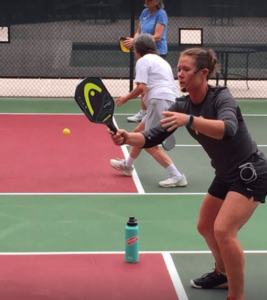
Another way, is to say “ball” (to yourself) as the ball is coming towards you, and another pro told me to look for the holes in the ball. It’s hard to be distracted when you are focusing on the ball.
I would recommend getting into your game head. As soon as you step onto the court clear your mind of everything else. Say to yourself, I am only thinking about this game. Between points, I will tap my hat with my paddle and that is code to my brain to FOCUS! You can tap your knee or squeeze your paddle as a way to get ready. But please don’t slap your thigh with your paddle so it creates a loud SLAP. That is neither helpful or comforting to your partner.
If you miss a shot, don’t continue to think about it. Shake it off. Tap your knee. Focus on the next rally. If someone rolls their eyes at you or gives you a smirk, ignore! Ignore! Ignore! Think only about winning the next shot.
In a tournament, one of the opponents’ strategies is to call a time out if you and your partner are getting way ahead in points. This is a method to break your concentration. Take this time, for a water break and keep thinking about the game. When you get back on the court, stay on the balls of your feet, give your partner a little encouragement with a tap of the paddles, a look meaning “we’ve got this!” and proceed where you left off.
To summarize, stay FOCUSED!
By Pickleball Terry
USAPA Sarasota Ambassador
Creator or SarasotaPickleball.com
The Tremendous 12 Pickleball Shots
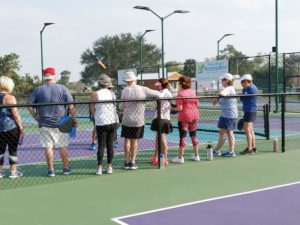
I had the pleasure of participating in a Suncoast Pickleball Camp in Punta Gorda this past week. What an amazing experience, and boy, did I learn a lot…under fire. The 4 pros, Barry Waddell, John Sperling, Scott Tingley and David Dunkin all kept a close eye on the 32 students, so much so, that 2 courts over from me one of the pros yelled out, “Terry, did I just see you step in the kitchen?”
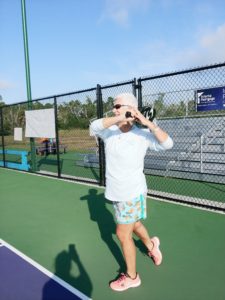
The camp started at 8:00 a.m. on 8 courts at the Pickleplex. If you don’t know what the Pickleplex is, it consists of 16 outdoor pickleball courts constructed on the Florida Southwestern College campus, and it literally put Punta Gorda on the pickleball map. Read this article here on how much $$$ the Pickleplex brought into the community.
We were divided into groups of 8 and had a different pro in the mornings and afternoons practicing: dinking, reset, lobs, serves, blocking and more, for 7 hours with a break for lunch. After 3 days, I’ll admit I was tired and sore.
It was an amazing experience and I would suggest anyone who is serious about pickleball and sharpening their skills should take a clinic or camp.
On the first day, pro, Barry Waddell, mentioned that there are 12 tremendous pickleball shots with subshots. I asked him to send them to me via email, and I will share them with you.
https://blog.pickleballcentral.com/2019/05/28/meet-the-pros-barry-waddel/
The 12 Pickleball Shots according to Barry Waddell:
- Serve (3 types: Topspin, Slice, Lob)
- Forehand return of serve (2 types: topspin and slice)
- Backhand return of serve (2 types: topspin, slice)
- Forehand topspin ground stroke drive
- Backhand topspin ground stroke drive
- Forehand volley (5 types: block, jab, roll, reset, kill)
- Backhand volley (5 types: block, jab, roll, reset, kill)
- Overhead smash
- Lob (2 types: flat, topspin)
- Dinking (3 types: flat, slice, roll)
- Third shot drop (3 types: flat, slice, roll)
- ATP shot
There you go. Master these and you master the game of pickleball.

